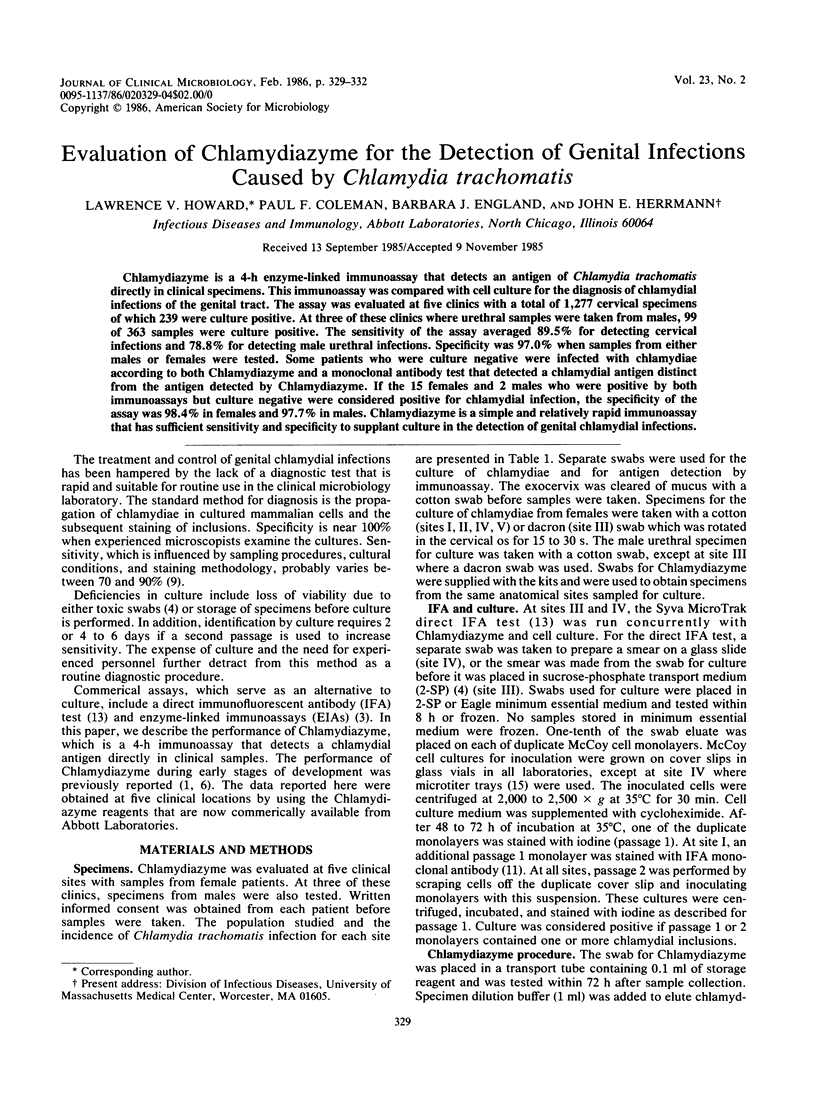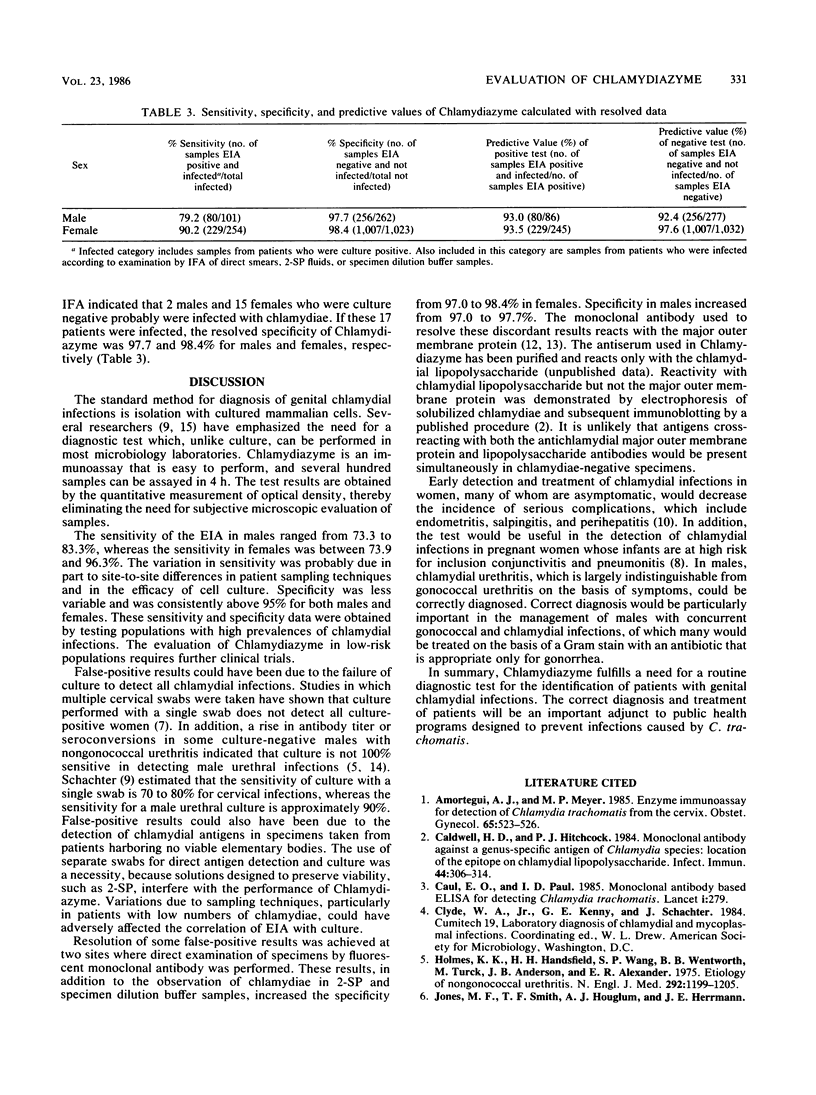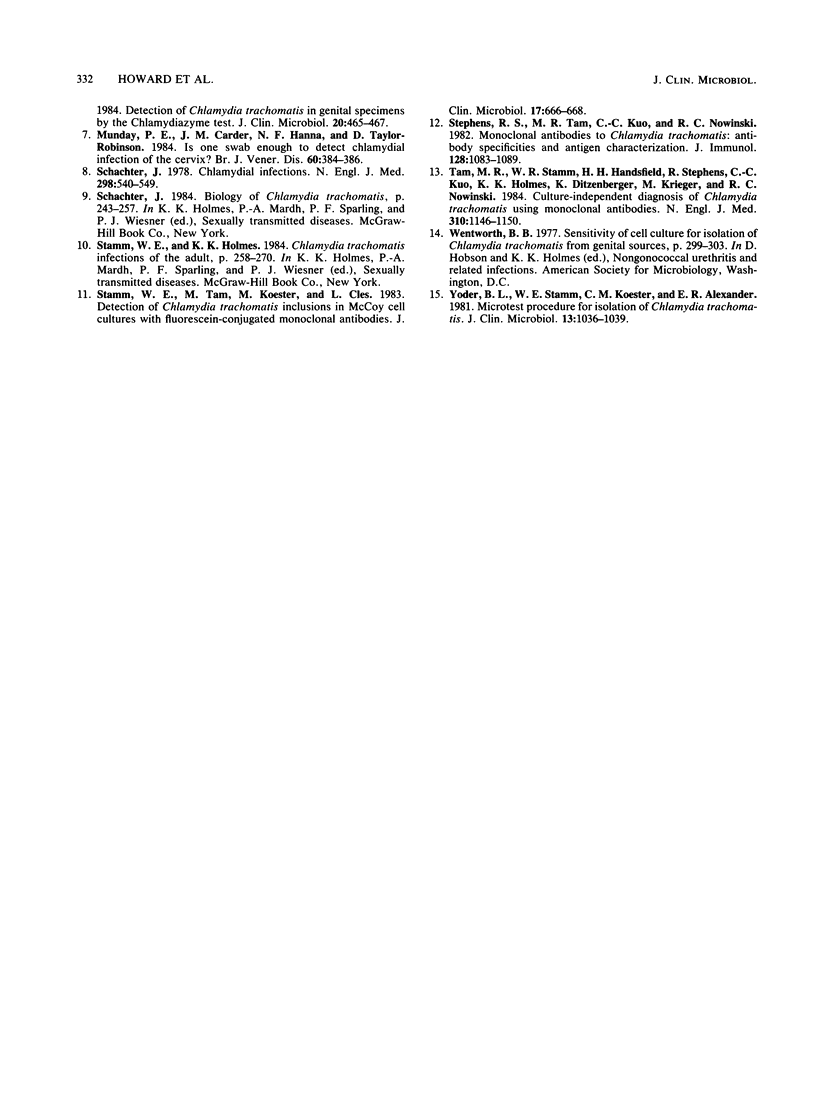Abstract
Chlamydiazyme is a 4-h enzyme-linked immunoassay that detects an antigen of Chlamydia trachomatis directly in clinical specimens. This immunoassay was compared with cell culture for the diagnosis of chlamydial infections of the genital tract. The assay was evaluated at five clinics with a total of 1,277 cervical specimens of which 239 were culture positive. At three of these clinics where urethral samples were taken from males, 99 of 363 samples were culture positive. The sensitivity of the assay averaged 89.5% for detecting cervical infections and 78.8% for detecting male urethral infections. Specificity was 97.0% when samples from either males or females were tested. Some patients who were culture negative were infected with chlamydiae according to both Chlamydiazyme and a monoclonal antibody test that detected a chlamydial antigen distinct from the antigen detected by Chlamydiazyme. If the 15 females and 2 males who were positive by both immunoassays but culture negative were considered positive for chlamydial infection, the specificity of the assay was 98.4% in females and 97.7% in males. Chlamydiazyme is a simple and relatively rapid immunoassay that has sufficient sensitivity and specificity to supplant culture in the detection of genital chlamydial infections.
Full text
PDF



Selected References
These references are in PubMed. This may not be the complete list of references from this article.
- Amortegui A. J., Meyer M. P. Enzyme immunoassay for detection of Chlamydia trachomatis from the cervix. Obstet Gynecol. 1985 Apr;65(4):523–526. [PubMed] [Google Scholar]
- Caldwell H. D., Hitchcock P. J. Monoclonal antibody against a genus-specific antigen of Chlamydia species: location of the epitope on chlamydial lipopolysaccharide. Infect Immun. 1984 May;44(2):306–314. doi: 10.1128/iai.44.2.306-314.1984. [DOI] [PMC free article] [PubMed] [Google Scholar]
- Caul E. O., Paul I. D. Monoclonal antibody based ELISA for detecting Chlamydia trachomatis. Lancet. 1985 Feb 2;1(8423):279–279. doi: 10.1016/s0140-6736(85)91056-6. [DOI] [PubMed] [Google Scholar]
- Holmes K. K., Handsfield H. H., Wang S. P., Wentworth B. B., Turck M., Anderson J. B., Alexander E. R. Etiology of nongonococcal urethritis. N Engl J Med. 1975 Jun 5;292(23):1199–1205. doi: 10.1056/NEJM197506052922301. [DOI] [PubMed] [Google Scholar]
- Munday P. E., Carder J. M., Hanna N. F., Taylor-Robinson D. Is one swab enough to detect chlamydial infection of the cervix? Br J Vener Dis. 1984 Dec;60(6):384–386. doi: 10.1136/sti.60.6.384. [DOI] [PMC free article] [PubMed] [Google Scholar]
- Schachter J. Chlamydial infections (third of three parts). N Engl J Med. 1978 Mar 9;298(10):540–549. doi: 10.1056/NEJM197803092981005. [DOI] [PubMed] [Google Scholar]
- Stamm W. E., Tam M., Koester M., Cles L. Detection of Chlamydia trachomatis inclusions in Mccoy cell cultures with fluorescein-conjugated monoclonal antibodies. J Clin Microbiol. 1983 Apr;17(4):666–668. doi: 10.1128/jcm.17.4.666-668.1983. [DOI] [PMC free article] [PubMed] [Google Scholar]
- Stephens R. S., Tam M. R., Kuo C. C., Nowinski R. C. Monoclonal antibodies to Chlamydia trachomatis: antibody specificities and antigen characterization. J Immunol. 1982 Mar;128(3):1083–1089. [PubMed] [Google Scholar]
- Tam M. R., Stamm W. E., Handsfield H. H., Stephens R., Kuo C. C., Holmes K. K., Ditzenberger K., Krieger M., Nowinski R. C. Culture-independent diagnosis of Chlamydia trachomatis using monoclonal antibodies. N Engl J Med. 1984 May 3;310(18):1146–1150. doi: 10.1056/NEJM198405033101803. [DOI] [PubMed] [Google Scholar]
- Yoder B. L., Stamm W. E., Koester C. M., Alexander E. R. Microtest procedure for isolation of Chlamydia trachomatis. J Clin Microbiol. 1981 Jun;13(6):1036–1039. doi: 10.1128/jcm.13.6.1036-1039.1981. [DOI] [PMC free article] [PubMed] [Google Scholar]


